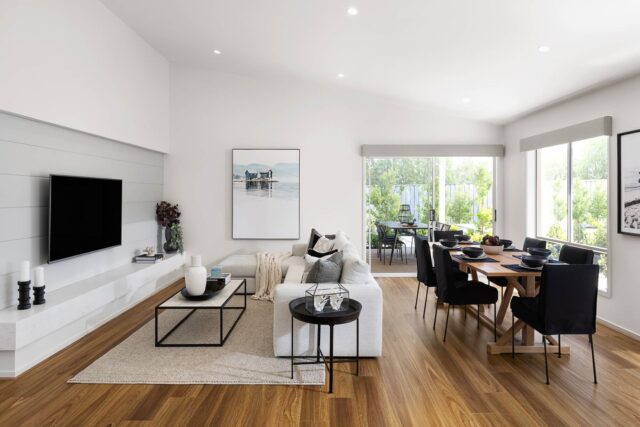
Making the decision to downsize from the family home is one of the biggest decisions you’ll ever face (right behind buying the family home in the first place!). Here are five tips to ensure your decision to downsize brings you all the benefits without any unnecessary challenges.
The first step is to decide on where you want to live. Do you want to stay in the same area, or are you open to a new adventure – perhaps that seachange or treechange you’ve always dreamed about? (There are a heap of state and federal government incentives to build or buy in regional Victoria, so there’s never been a better time to make the move!)
Next, you need to know how much you’ve got to play with. Getting your current property valued will give you a range to start considering what, where and how you will downsize.
Now that you know the likely sale range for your current property, you can crunch the numbers. You need to factor in things like how much longer you want to work for, and the lifestyle you want to live once you stop receiving a salary. (And factor in some serious grey nomad travelling – at least until overseas travel becomes a thing again.)
You’ll now start to develop a clear idea of what you can afford. This will also influence decisions about buying an existing property, or seizing the opportunity to build your dream home that will suit you perfectly for the next 20-30 years (and avoid most of the maintenance that comes with an existing home).
This is a scary concept for some – but, as Marie Kondo fever sweeps the world, the benefits are obvious. Many people put off downsizing because they have ‘too much stuff’ – stuff they never use, that is clogging up the garage and even rooms in your house. Having multiple spare rooms just for storing things you don’t really need is not economical! Especially not when you think of the space and lifestyle you could create if you had less stuff to deal with, and could focus more on living and entertaining areas.
One of the big downsizing traps is committing to a new purchase or build before you’ve sold your existing place. You’re always better to hold off buying until you’ve sold your current home, as selling afterwards can cause several issues:
We wish you the best of luck on your downsizing journey. Leaving the family home may feel daunting, but the benefits – including the freedom to create your dream lifestyle for the next 30 years – can be incredibly exciting!
IMPORTANT INFORMATION:
The information contained in this article is intended to be of a general nature only. It has been prepared without taking into account any person’s objectives, financial situation or needs. Before acting on this information, Fairhaven Homes recommends that you consider whether it is appropriate for your circumstances and that you seek independent legal, financial, and taxation advice before acting on any information in this article.